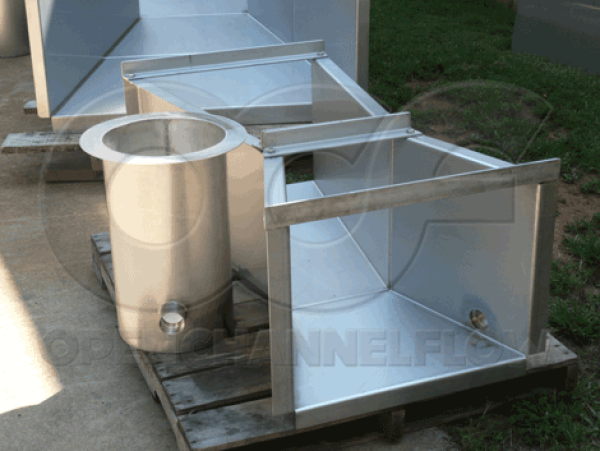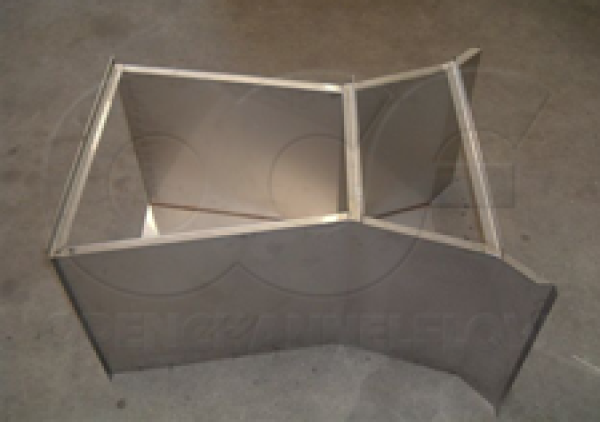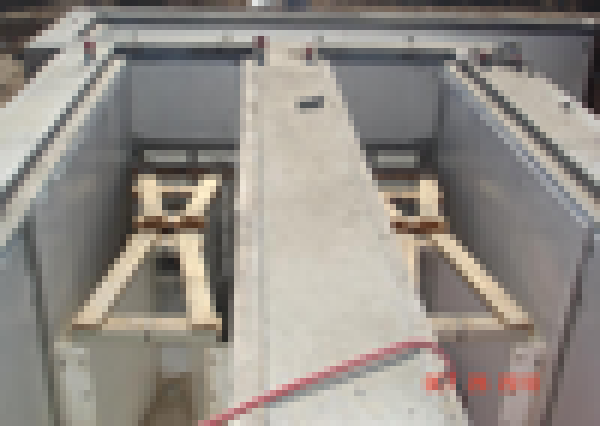This website uses a variety of cookies, which you consent to if you continue to use this site. You can read our Privacy Policy for
details about how these cookies are used, and to grant or withdraw your consent for certain types of cookies.
Parshall Flumes versus Cutthroat Flumes
Part of applying a flume is the selection of one flume type over another.
Here we compare Parshall flumes with Cutthroat flumes in:
- Design
- Accuracy
- Submergence
- End connections
- Sizes
to help you to compare between the two flume types.
In evaluationg between Parshall and Cutthroat flumes, understand that certain manufactuers / researchers have discourage the use of the Cutthroat flume dues due research related issues.
In certain investigations of the Cuthroat flume, researchers did not attempt to adequately contol flow entering the flumes being investigated. Here the flumes were centered in oversized channels with flat wing walls perpendicular to be flow. Unsurprisingly, difficulties in obtaining accurate flow measurement were encountered. With proper inlet conditions, Cuthroat flumes have proven to be quite accurate and versatile.
Flume Design
In some ways the design of the Parshall flume is simlar to that of the Cutthorat flume. Both have a wasp-wasted design, contracting down to a throat and then expanding again, and both have flat, vertical sidewalls. Beyond that, though, the designs differ in some significant ways.
Plan Layout
- Parshall Flumes
- Hourglass shape
- As the flow enters the flume, the inlet narrows down to the throat
- The angle of convergence of the inlet walls may vary among flume sizes
- The throat extends with the sidewalls parallel to each other for a short distance
- The discharge walls flare out
- The angle of divergence of the outlet walls may vary among flume sizes
- The outlet is narrower than the inlet
- The length of the discharge section is shorter than that of the inlet section
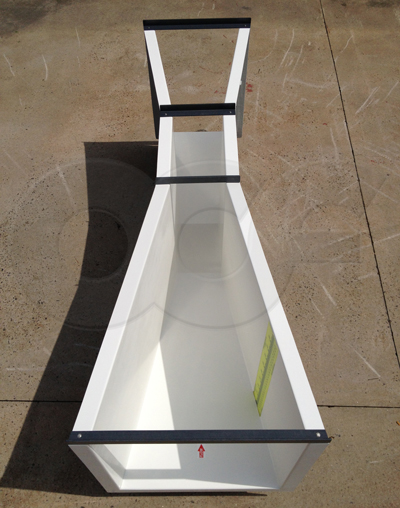
- Cutthroat Flumes
- Hourglass shape, but no "throat"
- As the flow enters the flume, the inlet narrows down to the throat
- The angle of convergence of the inlet walls is fixed at 1:3
- The throat section has no length - the inlet walls narrow down to the throat and then the immediatly flare back out
- The discharge walls flare out
- The angle of divergence of the outlet walls is fixed at 1:6
- The inlet and outlet are the same width
- The length of the discharge section is twice the length of the inlet section
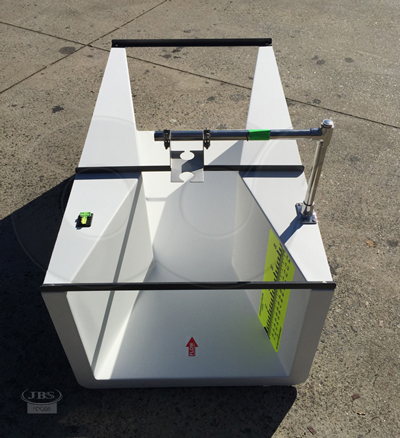
Elevation Layout
- Parshall
- Flat inlet floor
- Drop in floor going through the throat
- Partial recovery in the discharge
- Outlet elevation is lower than inlet elevation
- Sidewall height varies among flume sizes
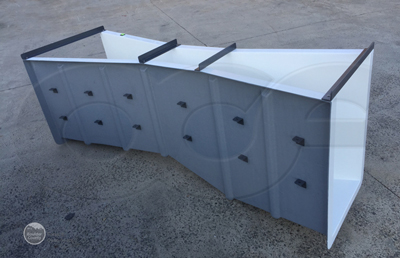
- Cutthroat
- Flat bottomed all the way through the flume
- Sidewall height is 1/3 of the flume length
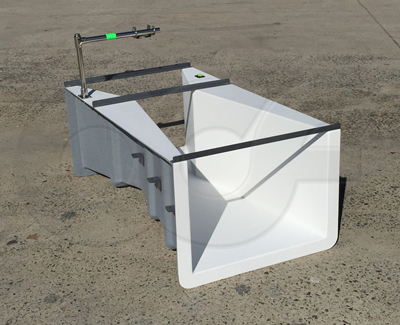
Flow Accuracy
- Parshall
- +/-2% under laboratory conditions
- In the field, +/-3-5% is more likely
- Cutthroat
- Designed to measure flows to an accuracy of +/-3%
Submergence Transition
Submerged flow in a flume occurs when downstream resistance to flow controls the flow upstream. Submergence results in lower flow velocities and higher water surface levels than would otherwise occur for a given flow rate under free-flow conditions. Submerged flumes discharge less flow than would otherwise be indicated were the standard free-flow ratings tables used.
The submergence ratio is a ratio of the downstream depth (Hb) to the upstream depth at the point of measurement (Ha). The submergence ratio (Hb/Ha) is expressed as a percentage.
The point at which the downstream water level becomes sufficiently high to reduce the velocity (where the effects of submergence are not negligible) is termed the transition submergence, st.
| Parshall Flume Submergence Transitions (St) (%) | |
| Flume Size | St |
| 1-inch to 3-inches | 50% |
| 6-inches to 9-inches | 60% |
| 1-foot to 8-feet | 70% |
| 10-feet to 50-feet | 80% |
Unlike the Parshall flume where the submergence transition is based upon the flume size, for the Cutthroat flume the submergence transition is based upon the flume length.
| Cutthroat Flume Submergence Transitions (St) (%) | |
| Flume Length | St |
| 18-inches | 60% |
| 36-inches | 65% |
| 54-inches | 70% |
| 108-inches | 80% |
In general, the smaller sizes of Cutthroat flumes have higher submergence transitions that simiarly sized Parshall flumes. As both styles of flumes get larger, however, this difference disappears.
Mounting / End Connections
Both flumes are available with inlet and outlet end adapters to connect to piping and both can be provided with wing walls to transition the flow into / out of the flume.
Available Sizes
The Parshall flume is avaialble in 22 standard (ASTM, ISO) sizes, ranging from 1-inch to 50-feet. Intermediate - and untested - sizes of 30-inches and 42-inches are offered by some manufacturers, but as the Parshall flume is an emperical device, interpolation between sizes is not recommended and any resultant flume must be laboratory tested/verified.
The Cutthroat flume has four standard lengths with four standard throat widths for each length. The range of 16 sizes does not cover flow rates as large as the middle to upper end Parshall flumes.
A distinct advantage of the Cutthroat flume is the ability to interpolate between throat widths for a given flume length to obtain intermediat size flumes.
Related Blog Posts
Explore more insights in our blog.

LOCATIONS IN ATLANTA, GA & BOISE, ID




